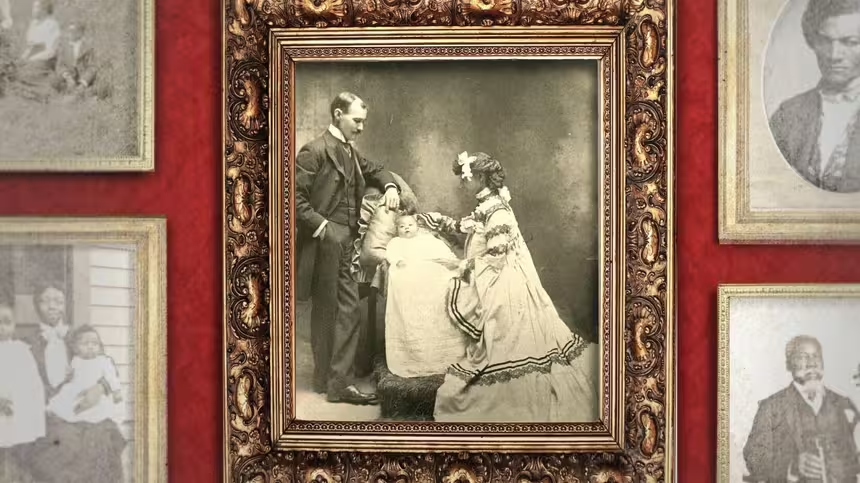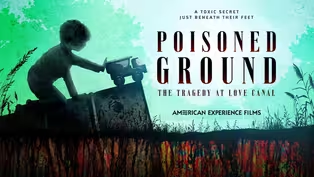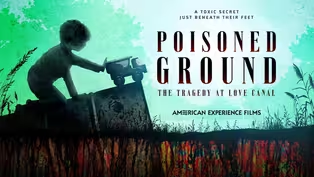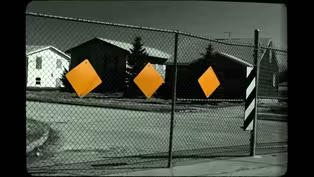
Fighting Environmental Racism In L.A. County
Clip: Season 36 Episode 4 | 4m 40sVideo has Closed Captions
Thousands of Superfund sites have been identified across the United States.
Thousands of Superfund sites have been identified across the United States, many of them located in communities of color and low income communities that face barriers to relocation. We spoke with environmental scientist Lizette Ruiz, a resident of South Gate, California, to learn more about the impact of environmental racism and what it's like living around a Superfund site today.
Problems playing video? | Closed Captioning Feedback
Problems playing video? | Closed Captioning Feedback
Corporate sponsorship for American Experience is provided by Liberty Mutual Insurance and Carlisle Companies. Major funding by the Alfred P. Sloan Foundation.

Fighting Environmental Racism In L.A. County
Clip: Season 36 Episode 4 | 4m 40sVideo has Closed Captions
Thousands of Superfund sites have been identified across the United States, many of them located in communities of color and low income communities that face barriers to relocation. We spoke with environmental scientist Lizette Ruiz, a resident of South Gate, California, to learn more about the impact of environmental racism and what it's like living around a Superfund site today.
Problems playing video? | Closed Captioning Feedback
How to Watch American Experience
American Experience is available to stream on pbs.org and the free PBS App, available on iPhone, Apple TV, Android TV, Android smartphones, Amazon Fire TV, Amazon Fire Tablet, Roku, Samsung Smart TV, and Vizio.
Buy Now

When is a photo an act of resistance?
For families that just decades earlier were torn apart by chattel slavery, being photographed together was proof of their resilience.Providing Support for PBS.org
Learn Moreabout PBS online sponsorshipOne thing I wish people understood about environmental racism is that people can't just move away from it.
That's something I would hear a lot as a child, as a student at the university.
Why don't you people just move?
And the truth is, we have a housing crisis, so there aren't too many choices.
And because of that, because of the need for housing, somebody is always going to live there.
So the problem's always gonna exist unless we clean up the contamination.
My name is Lizette Ruiz and I'm an environmental scientist and resident here in South Gate.
I've been living in South Gate since 2006, so approximately 18 years.
We're a community that is working class, predominantly Latino immigrant, children of immigrant.
South Gate is very central and very accessible to the Port of Long Beach, to the Port of L.A. You know, we have the 710 Freeway on one side.
We have the Alameda Corridor on the other side.
And those kind of serve as veins to all the shipment of goods that comes through there.
Industries choose communities like South Gate because of where they're located.
A lot of these companies operated during times when there weren't environmental laws that were very strong and effective.
And so we grew up with playgrounds being affected by a lot of the pollution from some of these factories.
Like here, a few blocks away from my house was Tweedy Elementary.
During the eighties, it was next to 16 industrial facilities.
And so the problem with that school was that, one day in 1986, a chlorine gas cloud came in and pretty much sent 71 students and teachers to the hospital.
And it turned out to be from a local Purex facility.
And so this, of course, got the parents to really demand more investigations, to demand more action.
And the next year, in 1987, the school actually saw that a chemical was leaking from the factory next door, which was Cooper Drum at the time.
And the chemicals that they realized was contaminating their school was sodium hydroxide, which is very cancerous and very dangerous to the children's health.
And after that was when the school was shut down.
And so just to show the gravity of the contamination at the site, Cooper Drum was actually one of the sites that eventually got to be under the Superfund programs.
Now that a lot of these areas are being redeveloped, we're dealing with cleaning them up.
And so it means we have to keep an eye out.
Oftentimes, you know, the government just wants to get these projects done without following the proper steps.
I think that's why it's really important to be civically active, to really know what is going to be built and kind of start asking those questions first, to really make sure that things are built to the safest capacity.
A lot of our community members are immigrants who don't speak or understand, or have time to understand a lot of what's going on in our own communities.
A lot of us stuck around for financial reasons, for our ties to our families.
This work is important because our life depends on it.
We breathe the air, we live here, we worship, and we work here, and our kids are growing up in these areas.
And so it's important for us to make sure that they have a better chance at having a healthy life.
Chapter 1 | Poisoned Ground: The Tragedy at Love Canal
Video has Closed Captions
Clip: S36 Ep4 | 8m 45s | Watch a preview of Poisoned Ground: The Tragedy at Love Canal. (8m 45s)
Trailer | Poisoned Ground: The Tragedy at Love Canal
Video has Closed Captions
Preview: S36 Ep4 | 2m 34s | The story of housewives who led a grassroots movement to galvanize the Superfund Bill. (2m 34s)
What if you found 22,000 tons of toxic waste in your own backyard?
Video has Closed Captions
Clip: S36 Ep4 | 3m 57s | 22,000 tons of toxic waste in your own backyard (3m 57s)
Providing Support for PBS.org
Learn Moreabout PBS online sponsorshipSupport for PBS provided by:
Corporate sponsorship for American Experience is provided by Liberty Mutual Insurance and Carlisle Companies. Major funding by the Alfred P. Sloan Foundation.




















